
计算机问题求解一论题4.14 启发式算法的概念 陶先平 2021年6月7日
计算机问题求解—论题4.14 启发式算法的概念 陶先平 2021年6月7日
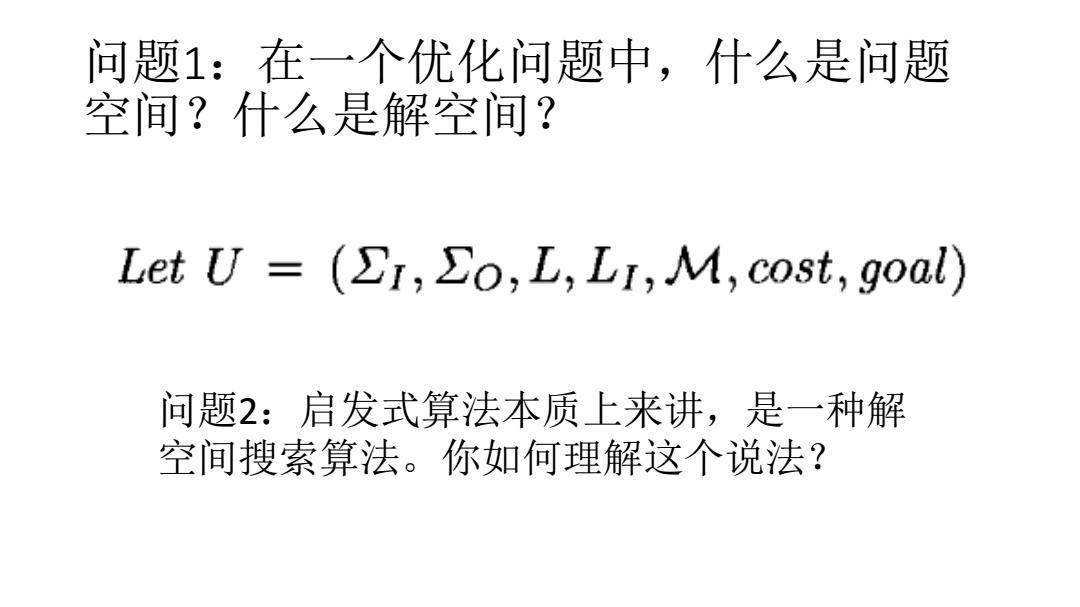
问题1:在一个优化问题中,什么是问题 空间?什么是解空间? Let U (SI,>o,L,LI,M,cost,goal) 问题2:启发式算法本质上来讲,是一种解 空间搜索算法。你如何理解这个说法?
问题1:在一个优化问题中,什么是问题 空间?什么是解空间? 问题2:启发式算法本质上来讲,是一种解 空间搜索算法。你如何理解这个说法?
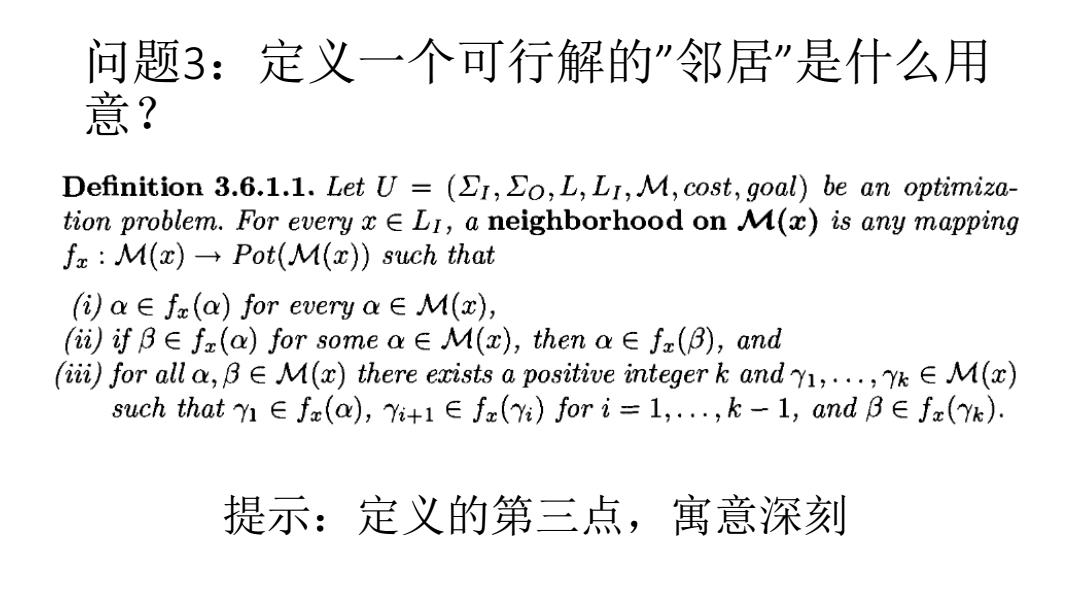
问题3:定义一个可行解的”邻居”是什么用 意? Definition 3.6.1.1.Let U (SI,So,L,LI,M,cost,goal)be an optimiza- tion problem.For every x E LI,a neighborhood on M(x)is any mapping f M(x)Pot(M(x))such that (i)a∈fx(a)for every a∈M(x), i)fB∈fz(a)for some a∈M(zx),then a∈fr(B),and (iii)for all a,BEM(x)there exists a positive integer k and1,...,YkE M(x) such that Y∈fx(a),Y+1∈fz(a)fori=1,,k-1,andB∈fx(Yk). 提示:定义的第三点,寓意深刻
问题3:定义一个可行解的”邻居”是什么用 意? 提示:定义的第三点,寓意深刻
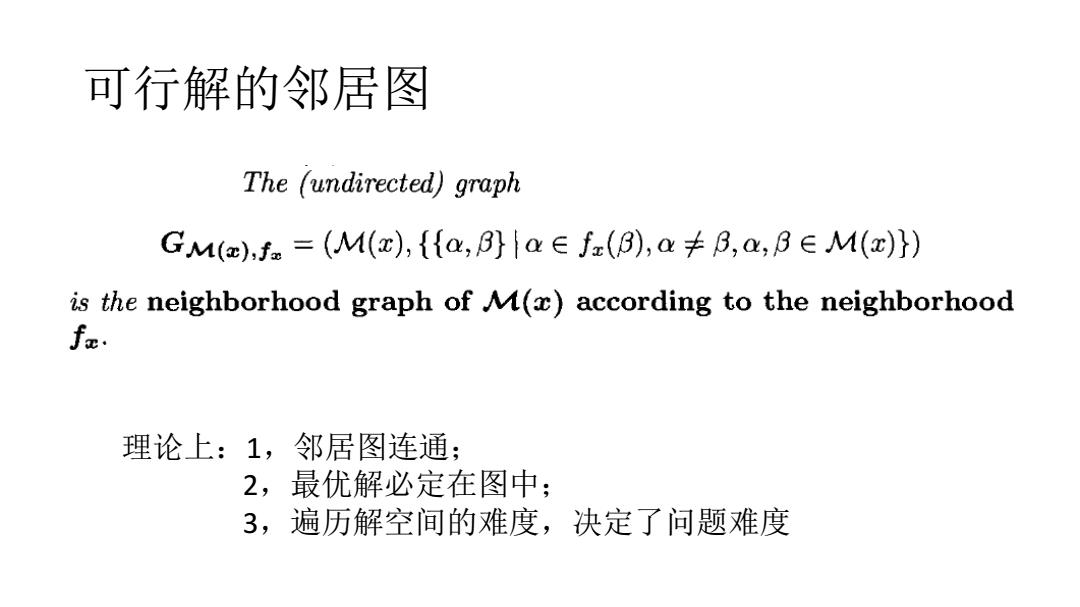
可行解的邻居图 The (undirected)graph GM().f=(M(x),{fa,B)laE fz(B),a#B,a,BEM()}) is the neighborhood graph of M(x)according to the neighborhood fa. 理论上:1,邻居图连通; 2,最优解必定在图中; 3,遍历解空间的难度,决定了问题难度
可行解的邻居图 理论上:1,邻居图连通; 2,最优解必定在图中; 3,遍历解空间的难度,决定了问题难度
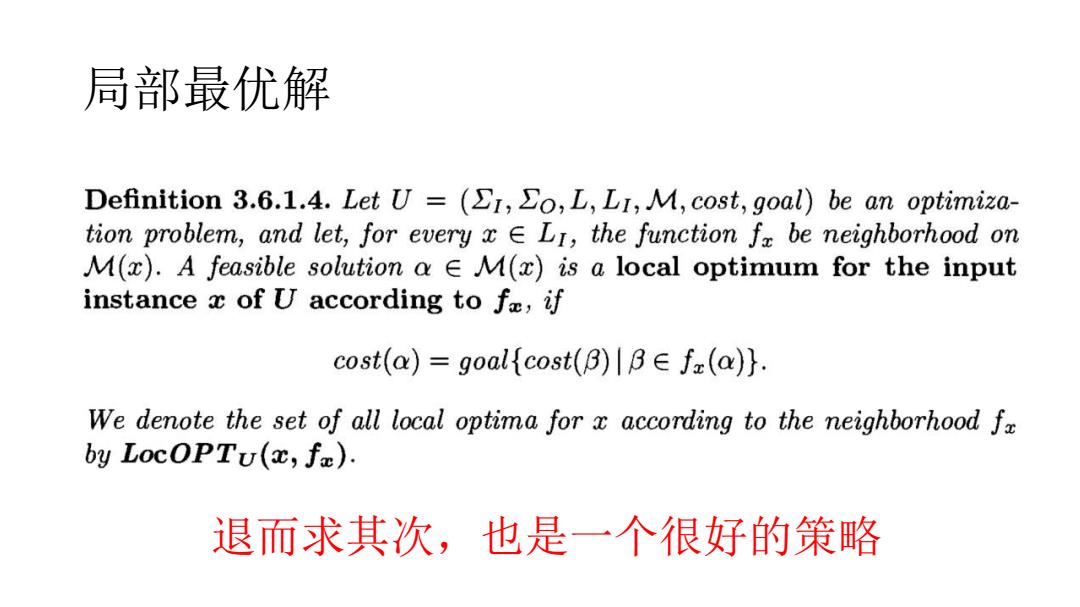
局部最优解 Definition 3.6.1.4.Let U =(SI,So,L,LI,M,cost,goal)be an optimiza- tion problem,and let,for every x E LI,the function fr be neighborhood on M(x).A feasible solution a E M(x)is a local optimum for the input instance x of U according to f,if cost(a)=goalfcost(B)BE fz(a)}. We denote the set of all local optima for x according to the neighborhood fx by LocOPTU(x,f). 退而求其次,也是一个很好的策略
局部最优解 退而求其次,也是一个很好的策略
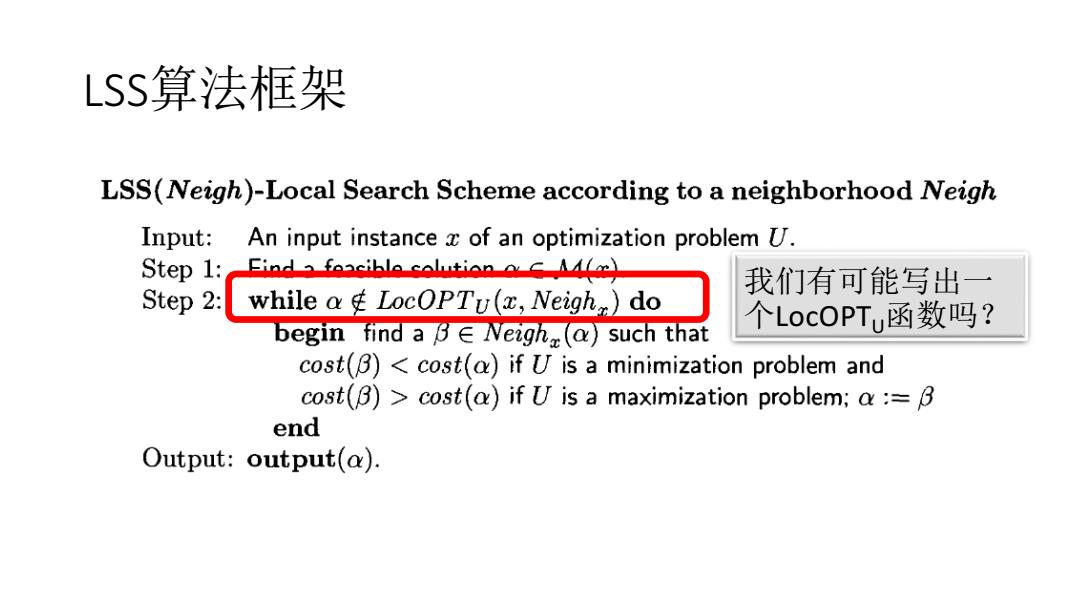
LSS算法框架 LSS(Neigh)-Local Search Scheme according to a neighborhood Neigh Input:An input instance z of an optimization problem U. Step 1: Eind 2 foasiblo solution) 我们有可能写出 Step 2: while ag LocOPTu(a,Neigh)do begin find a B E Neigh(a)such that 个LocOPTui函数吗? cost(B)cost(a)if U is a maximization problem;a:=B end Output:output(a)
LSS算法框架 我们有可能写出一 个LocOPTU函数吗?
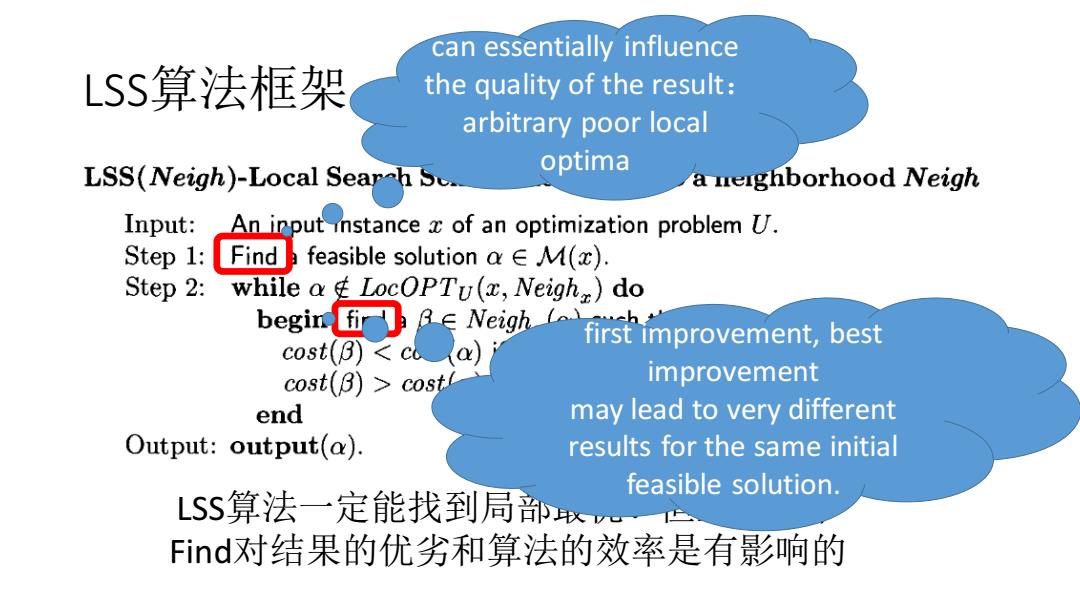
can essentially influence LSS算法框架 the quality of the result: arbitrary poor local LSS(Neigh)-Local Sear h Sc. optima a neighborhood Neigh Input:An input instance x of an optimization problem U. Step 1:Finda feasible solution a E M(x) Step 2:while ag LocOPTu(x,Neigh)do begin fir∈Neigh cost(B)cost improvement end may lead to very different Output:output(a). results for the same initial feasible solution. LSS算法一定能找到局部取 Find对结果的优劣和算法的效率是有影响的
LSS算法框架 LSS算法一定能找到局部最优!但上述两个 Find对结果的优劣和算法的效率是有影响的 can essentially influence the quality of the result: arbitrary poor local optima first improvement, best improvement may lead to very different results for the same initial feasible solution

LSS算法的典型示例:爬山算法 E A点、E点出发,结果大相径庭 任何一点出发,我们得到的近邻最优,只保证是极值! 近邻最优,往往是个“陷阱
LSS算法的典型示例:爬山算法 A B C D E F A点、E点出发,结果大相径庭 任何一点出发,我们得到的近邻最优,只保证是极值! 近邻最优,往往是个“陷阱
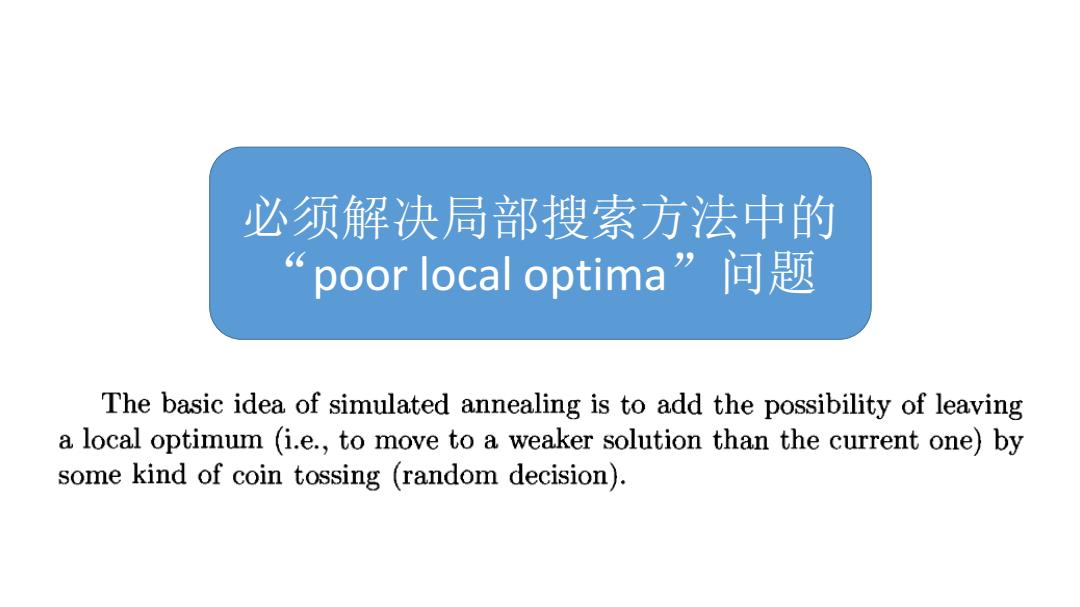
必须解决局部搜索方法中的 poor local optima”问题 The basic idea of simulated annealing is to add the possibility of leaving a local optimum (i.e.,to move to a weaker solution than the current one)by some kind of coin tossing (random decision)
必须解决局部搜索方法中的 “poor local optima”问题
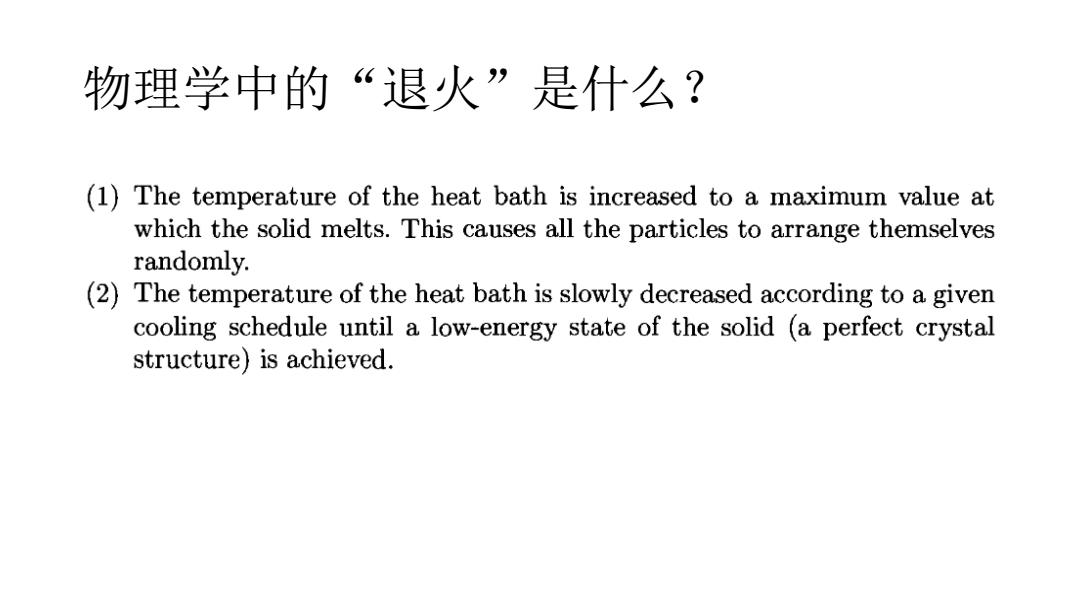
物理学中的“退火”是什么? (1)The temperature of the heat bath is increased to a maximum value at which the solid melts.This causes all the particles to arrange themselves randomly. (2)The temperature of the heat bath is slowly decreased according to a given cooling schedule until a low-energy state of the solid (a perfect crystal structure)is achieved
物理学中的“退火”是什么?